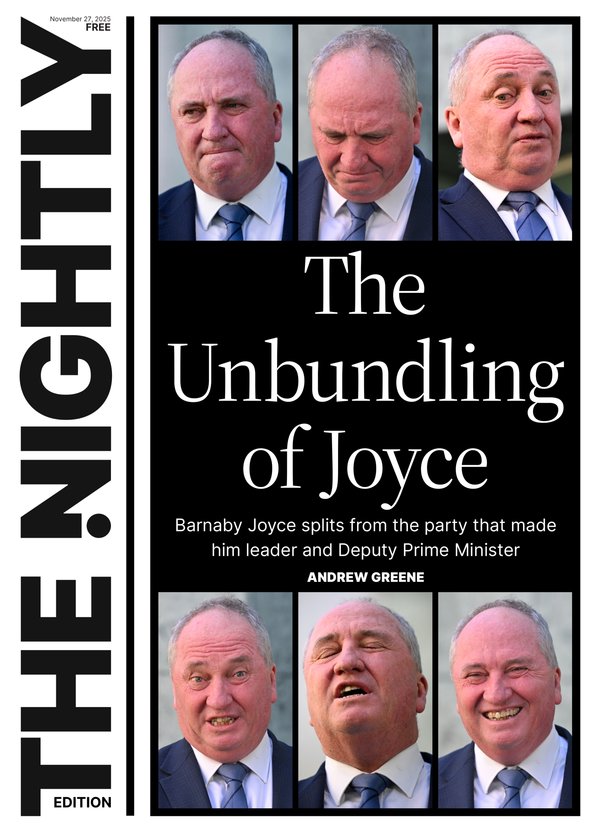First home buyers and investors clash as property prices surge

Australian home values are surging at their fastest pace in two years, with prices jumping nearly $54,000 since interest rates began to fall, as a chronic shortage of listings, surging investor demand, and new government incentives combine to turbocharge the housing market.
Fresh figures from CoreLogic/ Cotality show national home values rose 1.1 per cent in October, the strongest monthly increase since mid-2023, ahead of this week's Reserve Bank meeting, where policymakers are widely expected to keep the cash rate on hold.
Sign up to The Nightly's newsletters.
Get the first look at the digital newspaper, curated daily stories and breaking headlines delivered to your inbox.
By continuing you agree to our Terms and Privacy Policy.The rise underscores how a perfect storm of supply shortages, aggressive investor activity, and federal housing policies are continuing to push prices higher, even as affordability pressures remain acute for first-home buyers.
"Stronger housing demand at the lower price points is likely a culmination of serviceability constraints eroding purchasing power, persistently higher than average levels of investor activity and what is likely a pick-up in first home buyers taking advantage of the expanded deposit guarantee," said CoreLogic/Cotality research director Tim Lawless.
Big city prices continue to climb
In Sydney, home values rose 0.6 per cent in October, bringing annual growth to 6.3 per cent. The city's median house value now sits at $1.58 million, with competition remaining fierce across the city's middle and outer rings.
Melbourne recorded a 0.9 per cent gain in house values for the month, up 4.9 per cent for the year so far, taking the median to just under $974,000.
While the two largest capitals continue to post steady gains, it's the smaller capitals that are once again driving national growth.
Perth led the pack with a 1.9 per cent increase, followed by Adelaide (1.4 per cent) and Darwin (1.3 per cent) all reflecting strong interstate migration, low stock levels and relative affordability compared to the east coast markets.
Policy tailwinds and investor boom
October also marked the launch of the federal government's 5 per cent house deposit program for all first-time buyers, expanding access to the First Home Guarantee. At the same time, the nation's major banks passed on in full the Reserve Bank's third interest rate cut, putting more cash back into the pockets of mortgage holders.
Those policy tailwinds have coincided with a surge in investor activity. According to Lawless, credit to property investors is now growing at its fastest pace in a decade, raising fresh concerns about overheating in some markets.
"Investor participation has been persistently high, and with interest-only lending lifting, we could see regulators stepping in again if the trend continues," Lawless warned.
A similar surge in investor loans in the mid-2010s prompted the Australian Prudential Regulation Authority (APRA) to impose a cap limiting investor lending to 30 per cent of new housing loans.
In the past three months, that share has now climbed to 38 per cent, raising the possibility that tighter lending rules could soon return.
Regional markets heat up
Beyond the capital cities, regional markets are once again the standout performers, with smaller centres posting double-digit annual price growth.
In Western Australia, the coastal city of Albany has emerged as the country's hottest property market, with home values up a staggering 22.2 per cent over the past year.
The Victorian regional hub of Mildura recorded an 18.7 per cent rise, while Tamworth and Gunnedah in regional NSW are both up more than 13 per cent. In Queensland's Darling Downs, prices jumped 17 per cent.
These sharp gains highlight the ongoing affordability appeal of regional Australia, where buyers continue to chase value and lifestyle amid stretched capital city markets.
Why prices keep rising
The latest data shows the combined effect of constrained supply and policy stimulus is continuing to outweigh the dampening influence of higher interest rates.
The number of homes listed for sale nationally remains well below average, with many owners reluctant to sell in a rising market and builders still struggling with high construction costs and labour shortages.
New home construction inflation rose 1.2 per cent in the September quarter, and is now 45 per cent higher than pre-pandemic levels, adding further pressure to housing supply.
Lawless said the interplay between limited supply and rising demand has created "an entrenched upward pressure" on values.
"We've got a housing shortage that's likely to persist for years, even as borrowing costs remain relatively high," he said.
"Unless we see a material uplift in construction activity or a change in investor lending policies, prices are likely to continue rising."
Financial markets have also shifted their expectations for interest rate cuts, with traders no longer pricing in an easing before Christmas.
After the September quarter inflation figures showed price growth accelerating again. particularly across housing and construction, economists now believe the next rate cut may not come until mid-2025.
That could mean more pressure on affordability for would-be buyers hoping for relief from rising repayments.
But for sellers, the outlook remains buoyant as strong demand continues to collide with a shortage of supply.
With the spring selling season drawing to a close and CoreLogic's home value index climbing for the tenth straight month, Australia's property market appears to be defying gravity once again.
As Lawless put it: "The market is clearly responding to a mix of improved sentiment, government support, and limited supply. Unless those fundamentals change, it's difficult to see the current growth trend slowing any time soon."

Originally published as First home buyers and investors clash as property prices surge
